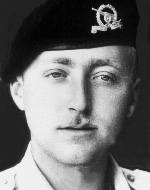Brown, Zevulun (Tommy)
Zevulun, the son of Rene-Miriam and Kalman, was born on April 23, 1930, in Budapest, the capital of Hungary. His father was a dental technician. Zevulun attended an elementary school and completed eight years of study. On the eve of World War II, some 200,000 Jews lived in Budapest, which constituted about a fifth of the city’s population. The city was one of the largest Jewish centers in Europe and Jews played an important role in the development of the agriculture and cultural life. At the end of the 1930s anti-Semitic sentiments intensified, and since 1938 a series of anti-Jewish laws were enacted in Hungary, similar to the Nuremberg Laws. From the summer of 1939, Jewish men were taken to the Munkaszolgalat (Labor Service) of the Hungarian army, many of whom perished. Hungary was conquered on March 19, 1944, and the situation of the Jews worsened. The Jews of Budapest were dispersed in special houses marked with a Star of David, their businesses closed, and hundreds of them were arrested. In April-July 1944 the Jews were concentrated throughout Hungary and systematically deported to Auschwitz. In November 1944 a ghetto was established in Budapest and the violence against the Jews increased: between 10,000 and 20,000 Jews were shot on the banks of the Danube. By the end of the war some 550,000 Hungarian Jews perished. Zevulun’s parents were among those sent to Auschwitz, where they were murdered by the Nazis. Zevulun and his grandmother were transferred to the ghetto, where they experienced the hardships and anguish until the liberation of the city by the Red Army in January 1945. At the time of liberation Zevulun could not continue his studies because he had to support him and his grandmother. He earned a living from dental training, a profession he had studied with his father. In 1949 Zevulun immigrated to Israel via France, with the Zionist youth movement in which he was a member. He came to Kibbutz Ein Zeitim in the Galilee with his group, and married a wife he had met in Hungary. Zevulun was a kind man, tall, handsome, and well-mannered. A sign in three languages: Hungarian, French and Hebrew. In August 1950 he left the kibbutz and moved to Tel Aviv, where he worked as an electrician. After a while he divorced his wife. Zevulun completed an officers’ course and was assigned to serve as an instructor in the Artillery Corps, with the rank of lieutenant colonel. On February 23, 1953, Zevulun left his base in Beit Guvrin for a Shabbat holiday in Tel Aviv, and since then his fate has disappeared, and his awareness of his absence arose only two days later, when he did not return from his vacation. But it seems that Arab infiltrators encountered him when he was walking on the road to the base and murdered him at the age of 23. The memorial to Zevulun was erected in the military cemetery on Mount Herzl in Jerusalem, the only relative of Zevulun, She died in 1958, at the age of one hundred and two, without receiving any information about his fate. “They are survivors of the Holocaust who survived the last vestige of their nuclear family (parents, brothers, sisters, sons and daughters) who experienced the Holocaust in the ghettos and / or the concentration and extermination camps and / or in hiding and hiding in territories occupied by the Nazis and / The undergrounds or partisans in the Nazi-occupied territories who immigrated to Israel during or after World War II wore uniforms and fell in the Israeli army. This fallen hero is a “maklan” – a hero whose burial place is unknown.
